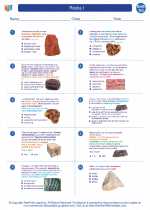Somatic Nervous System
The somatic nervous system is responsible for voluntary movement and sensory input. It is composed of sensory neurons that transmit information from the body to the CNS, and motor neurons that transmit commands from the CNS to the skeletal muscles. This system allows us to consciously control our movements and perceive sensations such as touch, pressure, temperature, and pain.
Autonomic Nervous System
The autonomic nervous system regulates involuntary bodily functions such as heart rate, digestion, respiratory rate, and glandular activity. It is further divided into the sympathetic and parasympathetic divisions. The sympathetic division is responsible for the "fight or flight" response, while the parasympathetic division is responsible for the "rest and digest" response.
Functions of the Peripheral Nervous System
- Transmitting sensory information from the body to the CNS
- Transmitting motor commands from the CNS to the muscles and glands
- Regulating involuntary bodily functions through the autonomic nervous system
- Allowing for voluntary movement and sensory perception through the somatic nervous system
Study Guide for the Peripheral Nervous System
When studying the peripheral nervous system, it is important to understand the following key concepts:
- Structure and function of the somatic nervous system
- Structure and function of the autonomic nervous system
- The role of sensory neurons and motor neurons in the PNS
- The divisions of the autonomic nervous system and their respective functions
- Common disorders and diseases related to the PNS
Additionally, it is essential to be familiar with the various reflexes controlled by the PNS and the pathways through which sensory and motor information travels between the CNS and the peripheral nerves.
By understanding these concepts and studying the anatomical and physiological aspects of the peripheral nervous system, you can gain a comprehensive understanding of its role in the human body.
[Peripheral Nervous System] Related Worksheets and Study Guides:
.◂Earth Science Worksheets and Study Guides High School. Rocks I

 Worksheet/Answer key
Worksheet/Answer key
 Worksheet/Answer key
Worksheet/Answer key
 Vocabulary/Answer key
Vocabulary/Answer key
 Vocabulary/Answer key
Vocabulary/Answer key
 Vocabulary/Answer key
Vocabulary/Answer key
